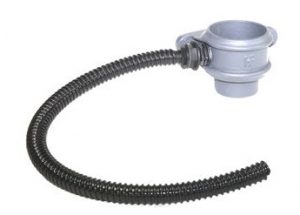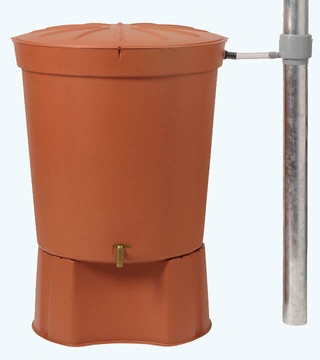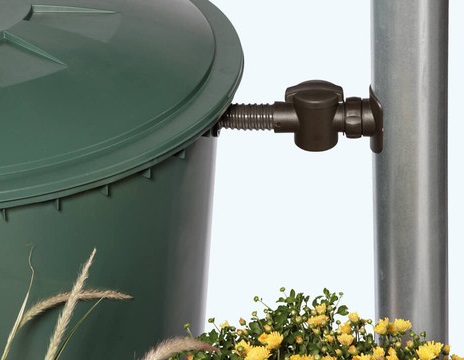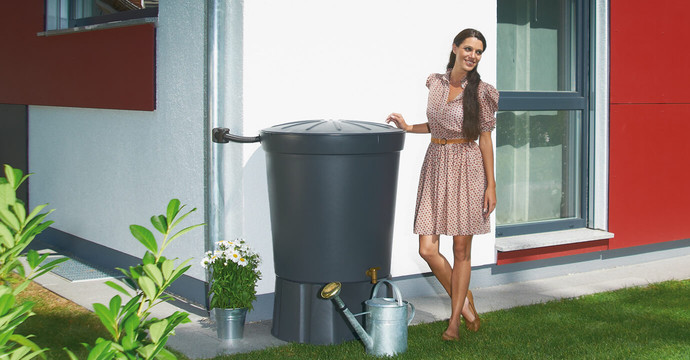Drainage Superstore is proud to offer a range of rainwater diverters from brands such as Lindab, Brett Martin, Hargreaves and Alumasc, to work with your roofline drainage system. Choose from a number of different styles to fit in with your current rainwater system, and rest assured that whichever product you choose will not only perform well but also be of the highest quality.
But what is a rainwater diverter, how do they work, and why should you use a rainwater diverter? Read on to find out more about rainwater diverters, and if you have any questions, don’t hesitate to call our team on 01752 692221 or use the live chat in the bottom right hand corner, and they will be more than happy to help.
What is a rainwater diverter?
 A rainwater diverter is a simple device that connects your roofline drainage system to a water storage tank, such as a water butt or garden water storage tank. Rainwater diverters come in a wide range of designs, shapes and sizes, from square rainwater diverters, to round rainwater diverters, and rigid rainwater diverters to flexible rainwater diverters, with a number of different finishes to blend in with your current roofline drainage system.
A rainwater diverter is a simple device that connects your roofline drainage system to a water storage tank, such as a water butt or garden water storage tank. Rainwater diverters come in a wide range of designs, shapes and sizes, from square rainwater diverters, to round rainwater diverters, and rigid rainwater diverters to flexible rainwater diverters, with a number of different finishes to blend in with your current roofline drainage system.
Choose from manually adjustable rainwater shoes, fixed rainwater diverters and even rainwater diverters with an overflow function to allow the rain to bypass the diverter when the water storage tank is full.
How does a rainwater diverter work?
A rainwater diverter attaches to a downpipe that runs from the roofline guttering down towards the ground, and diverts some of the rainwater into a water storage tank, instead of the water running directly down into the ground drainage system.

How to fit a rainwater diverter
A rainwater diverter is really easy to attach. One option involves the downpipe being simply cut in the desired place, with the rainwater diverter fitting in place of the cut out section. The shoe or hose that is attached to the rainwater diverter can then be fixed to the side or top of a water storage tank or water butt, where the diverted rainwater will then be stored.
Another option is that the rainwater diverter has been designed as if it was a gutter bracket or downpipe joint, in which case the rainwater diverter simply needs to be connected to two sections of downpipe as if it was a gutter joint.
Of course, with each brand the installation process may vary slightly, but the process still remains simple. 
What are the benefits of using a rainwater diverter?
Using a rainwater diverter is a great way to save on utility bills, reduce your impact on the environment, and keep a store of free and clean water for use in your home and garden.
Save money
If the building runs on a metered water system, any water that is used to water plants, clean cars or fill up paddling pools can significantly add to your water bill. Using a rainwater diverter to direct rainwater from the roofline drainage into a water butt results in a free source of water that can be used for these activities.

Chemical-free water
Another benefit of using a rainwater diverter to divert rainwater from the drainage system and into a storage tank is that the water is clean and free from any chemicals that are traditionally used to clean the water that is used within the home. This can be beneficial because plants may be negatively affected by the chemicals within the mains water system, causing issues with growth. Storing rainwater that is collected via a rainwater diverter kit will mean clean and chemical-free water can be used on plants in your garden.

Minimise ground saturation
When there are high levels of rainfall, the guttering system on your building can be so efficient that the rainwater reaches the ground drainage system quickly and can result in overflowing, leading to the water causing the ground to become saturated. This can not only lead to muddy and unsightly gardens, but can also result in flooding, and unstable ground. Having a rainwater diverter in place reduces the amount of water that goes into the ground drainage system, and therefore minimises the risk of overflowing and saturation of the ground.













